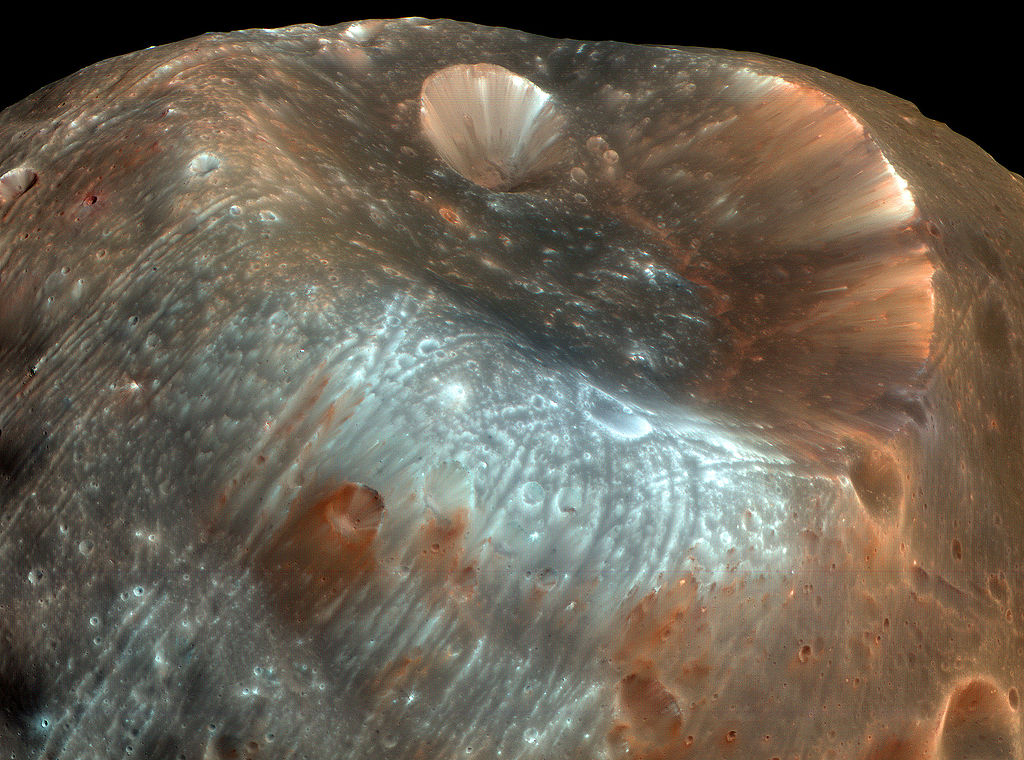
Phobos is the largest of Mars’ two tiny moons, but 50 million years from now, that may no longer be the case. According to new research, Phobos is gradually being pulled apart by Mars’ gravity and will eventually be destroyed. The unusual long grooves on Phobos’ surface, which have been a puzzle for planetary scientists, are a key piece of evidence that point to eventual structural failure of this little worldlet.
The findings are being presented today at this year’s Meeting of the Division of Planetary Sciences of the American Astronomical Society at National Harbor, Maryland.
“We think that Phobos has already started to fail, and the first sign of this failure is the production of these grooves,” said Terry Hurford of NASA’s Goddard Space Flight Center in Greenbelt, Maryland.
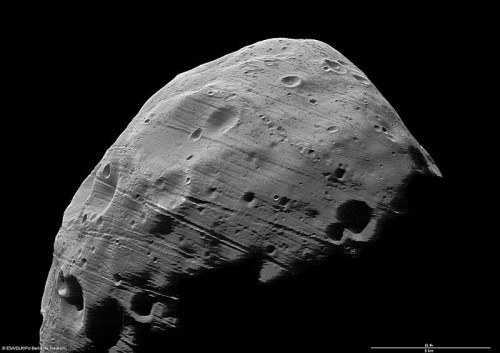
The grooves are now thought to be “stretch marks” caused by tidal forces from the gravitational pull of Mars. A similar process occurs between Earth and the Moon, where tidal forces produce waves in the oceans. Previous theories included the grooves being caused by the impact which created the large Stickney crater on one “end” of Phobos, or by smaller impacts resulting from material being thrown out from Mars during larger impacts on the Martian surface. The problem with the Stickney hypothesis however was that it was later determined that the grooves don’t actually radiate outward from the crater itself as previously thought, but rather from a different focal point on the surface. Therefore, the grooves were not caused by that impact, which scientists think almost destroyed Phobos. But now new modelling studies have shown the grooves to be caused by tidal forces from Mars itself.
Phobos orbits only 3,700 miles (6,000 kilometers) above the surface of Mars, which is closer than any other moon in relation to its planet in the Solar System. Logically, this also makes Phobos more likely to experience tidal forces. As a result, the moon is inning closer to Mars in its orbit, by about 6.6 feet (2 meters) every hundred years. In 30-50 million years, Phobos will likely be pulled apart by Mars’ gravity.
The tidal force theory was actually first proposed when the Viking spacecraft took good close-up images of Phobos and the grooves were clearly seen for the first time. But the idea was rejected because Phobos was thought to be solid throughout; tidal forces wouldn’t be strong enough in that case. But now, the moon is thought to be more like a rubble pile of material being weakly held together, with open spaces within its interior. (Not hollow though, as some people have suggested, and a popular theory in the 1950s and 1960s). This rubble pile is covered by a powdery regolith about 330 feet (100 meters) thick.
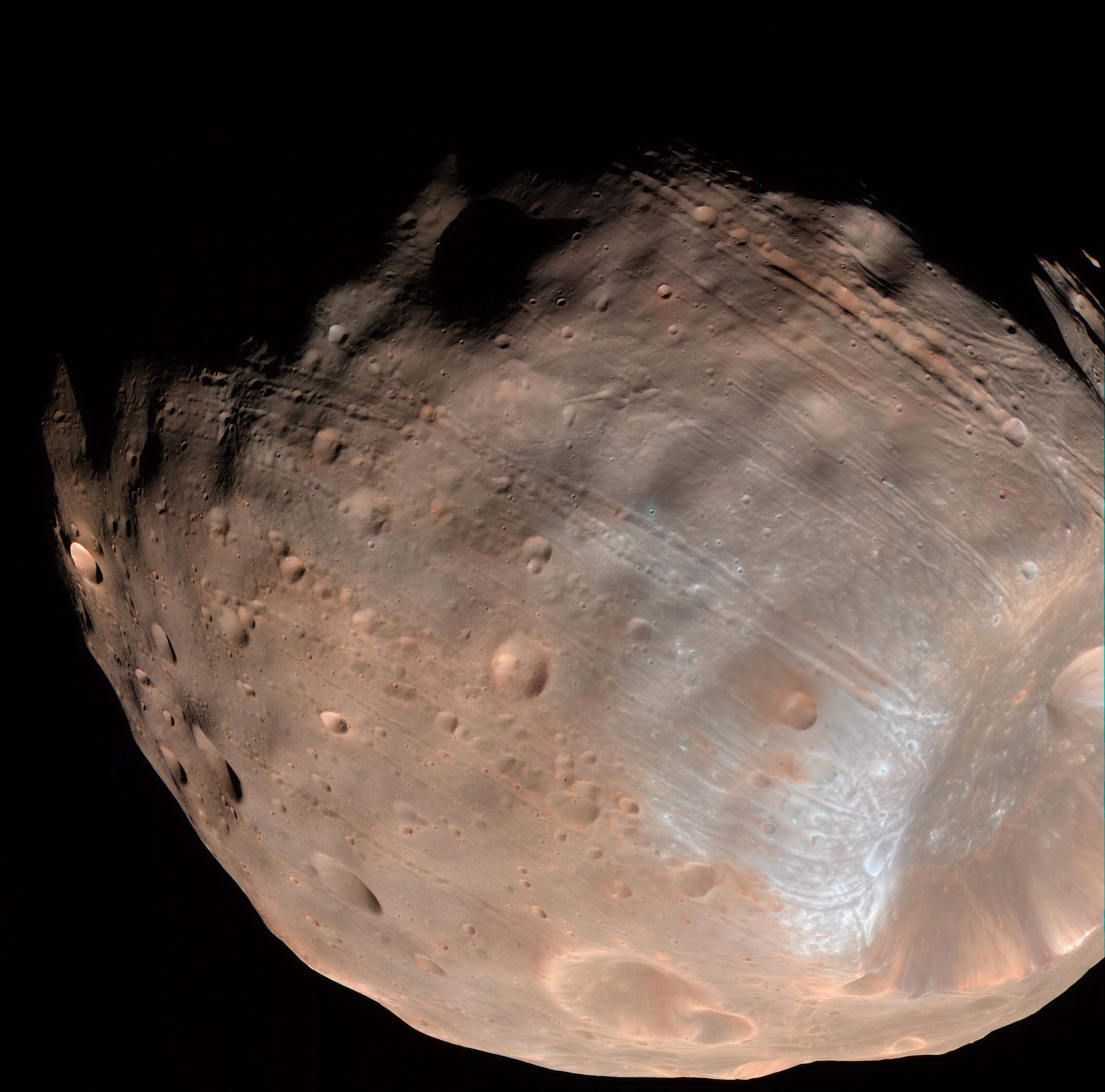
According to said Erik Asphaug of the School of Earth and Space Exploration at Arizona State University in Tempe and a co-investigator of the study, “The funny thing about the result is that it shows Phobos has a kind of mildly cohesive outer fabric. This makes sense when you think about powdery materials in microgravity, but it’s quite non-intuitive.”
Being less dense makes Phobos more susceptible to tidal forces, and, it seems, will eventually lead to its destruction. There is enough stress to cause the surface to fracture, as is evidenced by the grooves. The stress fractures predicted by computer modelling line up very nicely with the actual fractures seen on Phobos, another indication that the tidal force theory is correct. Another observation, that some grooves are younger than others, also fits.
This kind of tidal force has been seen elsewhere in the Solar System as well. Neptune’s largest moon Triton, for example, is slowly losing its orbit and falling inward toward the planet, and it displays similar fractures to those seen on Phobos, as well as blocky outcrops, ridges, troughs, furrows, hollows, plateaus, icy plains and few craters. Triton is also famous for its nitrogen geysers, a form of cryovolcanism. Triton will eventually share the same fate as Phobos at an estimated 3.6 billion years from now. Triton is the only moon in the Solar System known to orbit in the direction opposite of its planet’s rotation.
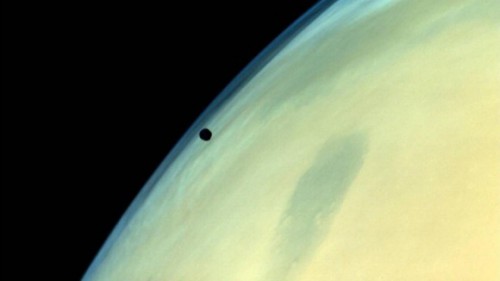
It is also theorized that Saturn’s rings (and those of Jupiter, Uranus and Neptune) are the result of a moon or moons which was also destroyed by tidal forces, with the millions of fragments now orbiting the planet as rings. Or, alternatively, a moon was destroyed by an impact from another moon, a comet or an asteroid. It’s also possible that the rings simply formed from the same original material that Saturn itself formed from, when the Solar System was still very young.
One idea is that the rings formed when a Titan-sized moon, with a rocky core and icy mantle, spiralled into Saturn and was ripped apart.
“The end result is a pure ice ring,” said Robin Canup of the Southwest Research Institute in Boulder, Colorado.
“It is a very clever new idea,” said Joseph Burns, a planetary scientist from Cornell University in Ithaca, New York. “One of the things it can do is produce rings made out of quite pure water ice, which has been a problem in the past.”
So what about our own Moon? Will it suffer the same fate? Probably, but in a bit of a different way. The Moon is slowly moving away from Earth, at a rate of about 4 cm per year. In this case, tidal friction is gradually slowing the Earth’s rotation rate, and Earth rotational momentum is being transferred to the Moon’s orbital momentum. The length of a day and a month will also gradually increase as well as a result. It’s not quite like Space: 1999, where the Moon is catapulted violently from its orbit, but billions of years from now, the distance between the Earth and Moon will be 135% greater than it is now. By then, it would also take 47 days for the Moon to orbit Earth. As mentioned by physics instructor Paul Walorski:
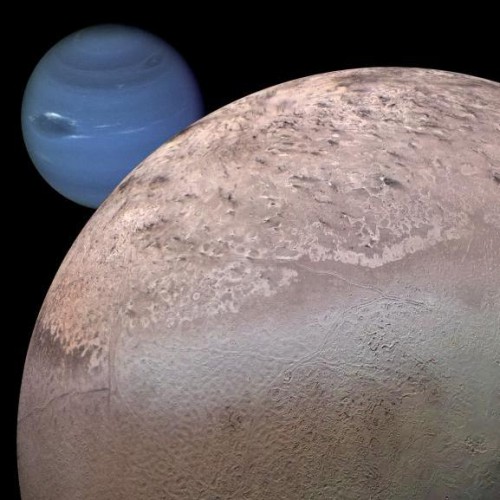
“To picture what is happening, imagine yourself riding a bicycle on a track built around a Merry-go-Round. You are riding in the same direction that it is turning. If you have a lasso and rope one of the horses, you would gain speed and the Merry-Go-Round would lose some. In this analogy, you and your bike represent the Moon, the Merry-Go-Round is the rotating Earth, and your lasso is gravity. In orbital mechanics, a gain in speed results in a higher orbit.”
By that time, the Sun will be turning into a red giant star, which means the Moon will stop receding and end up being torn apart as well.
“The density and temperature both increase rapidly near the apparent surface (photosphere) of the future giant Sun,” said Lee Anne Willson of Iowa State University.
The Moon’s orbit will start to decay due to drag from the Sun’s atmosphere as it and the Earth enter into the searingly hot region caused by the expanding Sun. As a result, the Moon will then start orbiting closer to Earth again until it reaches a point 11,470 miles (18,470 kilometers) above the surface, called the Roche limit.
“Reaching the Roche limit means that the gravity holding it [the Moon] together is weaker than the tidal forces acting to pull it apart,” said Willson.
The Moon will be torn apart, creating a new ring or rings around the Earth about 23,000-miles (37,000-kilometers) in diameter. Unlike Saturn’s rings however, they will likely be short-lived.
“Particles of different masses will have different survival times; the smaller particles will be removed first, and the biggest ones last. Most of the ring particles would be gone by the time the Earth reaches the stellar photosphere,” Willson said.
According to some calculations though, the Moon could possibly escape that fate if the Sun were to lose 20% of its mass before expanding as far out as the Earth. In that scenario, the Earth and Moon wouldn’t be incinerated and would end up just drifting and facing each other in a perpetual tidal lock.
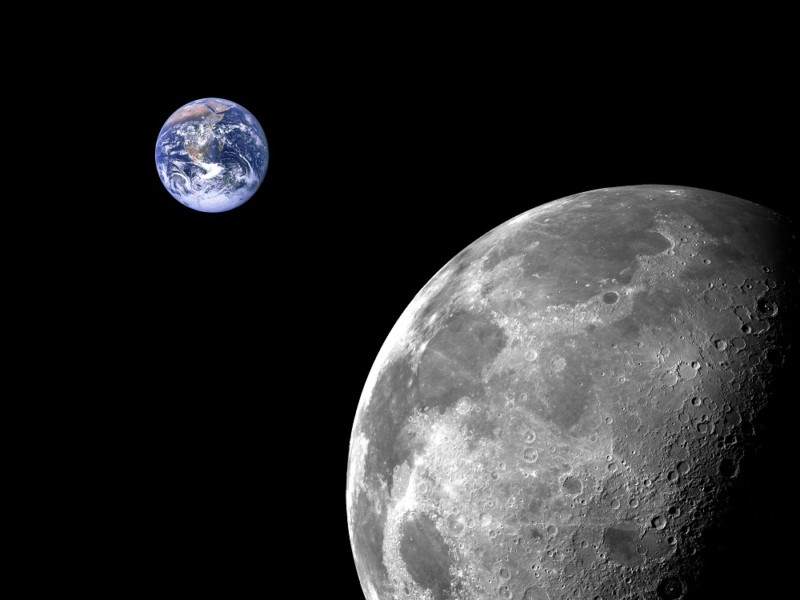
These findings could even be applied to some distant exoplanets, ones which may experience similar gravitational stress from their star. They also could face a fiery fate. Exomoons could also face destruction the same as Phobos or Triton, as they lose their orbits and move closer to their host planets.
“We can’t image those distant planets to see what’s going on, but this work can help us understand those systems, because any kind of planet falling into its host star could get torn apart in the same way,” said Hurford.
The fate of Phobos will be similar to the fate of other objects in our Solar System, and we as a species probably won’t be around by that time to witness it. Just like living things, planets, moons and stars are born, evolve and then eventually die in an endless cycle, and Phobos provides a glimpse of that process within our own Solar System.
Want to keep up-to-date with all things space? Be sure to “Like” AmericaSpace on Facebook and follow us on Twitter: @AmericaSpace
Missions » MOM »



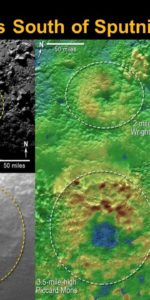
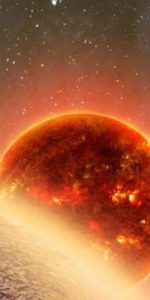
I guess NASA better visit Phobos while it’s still there!